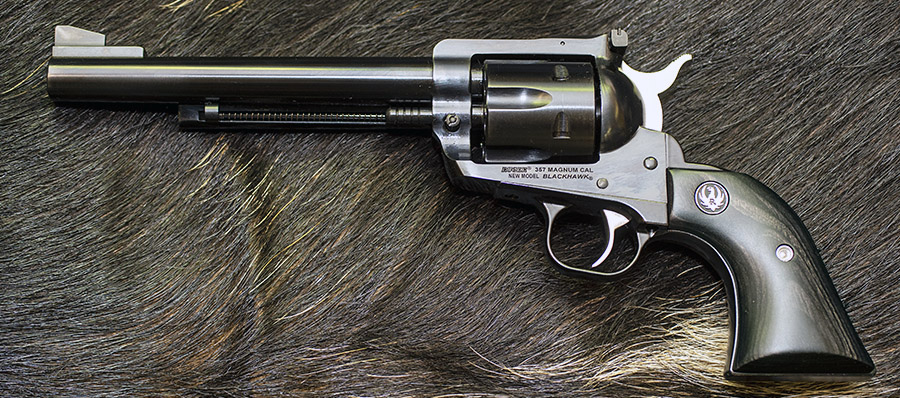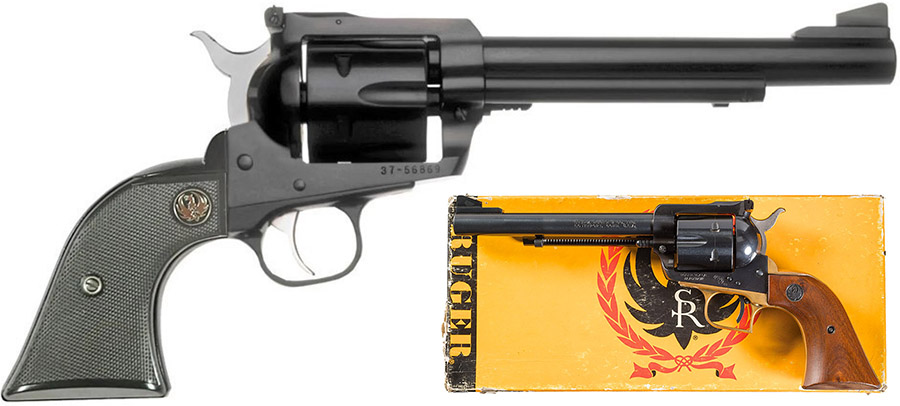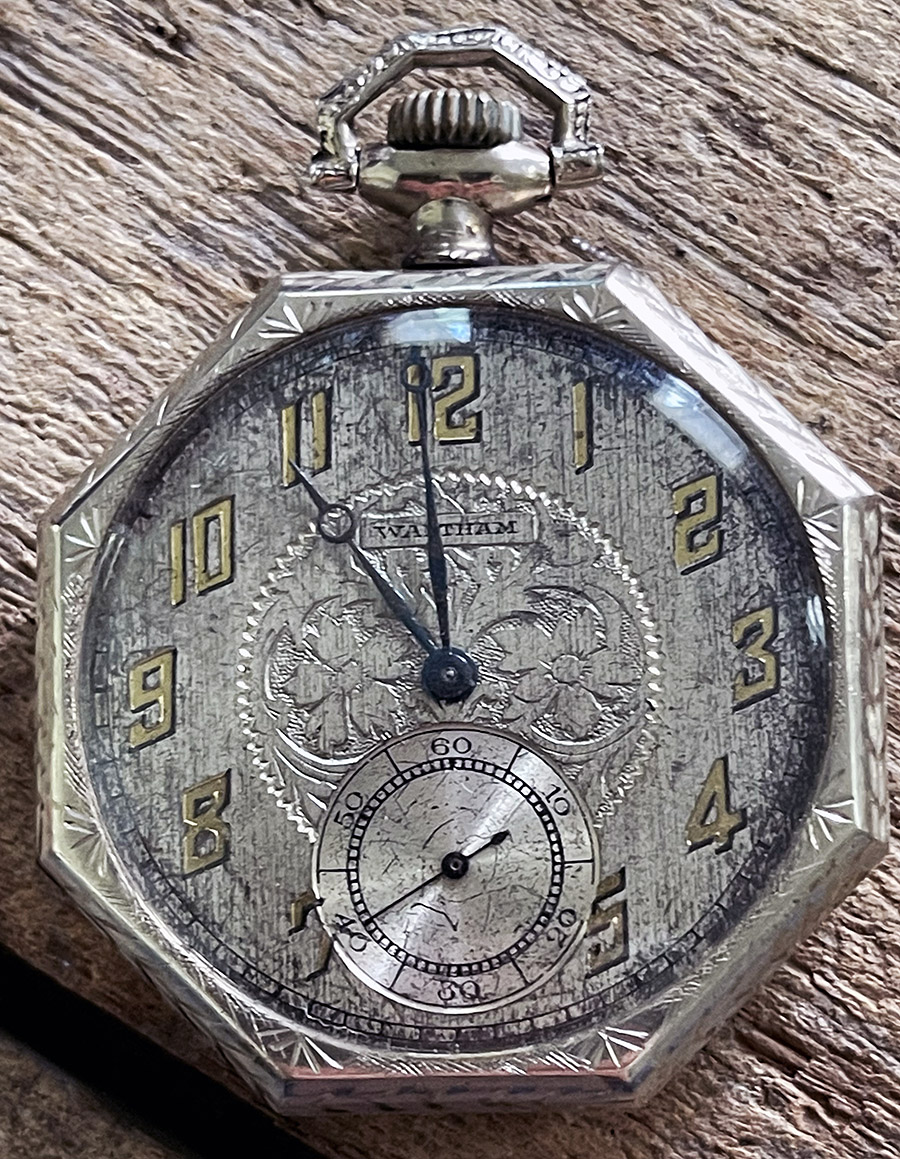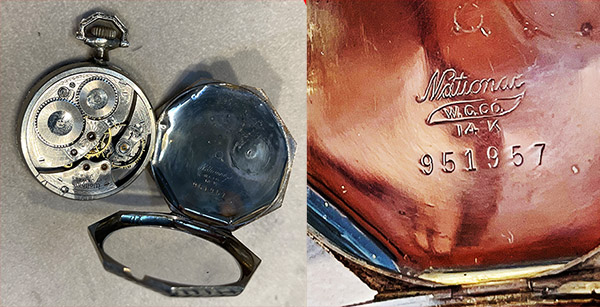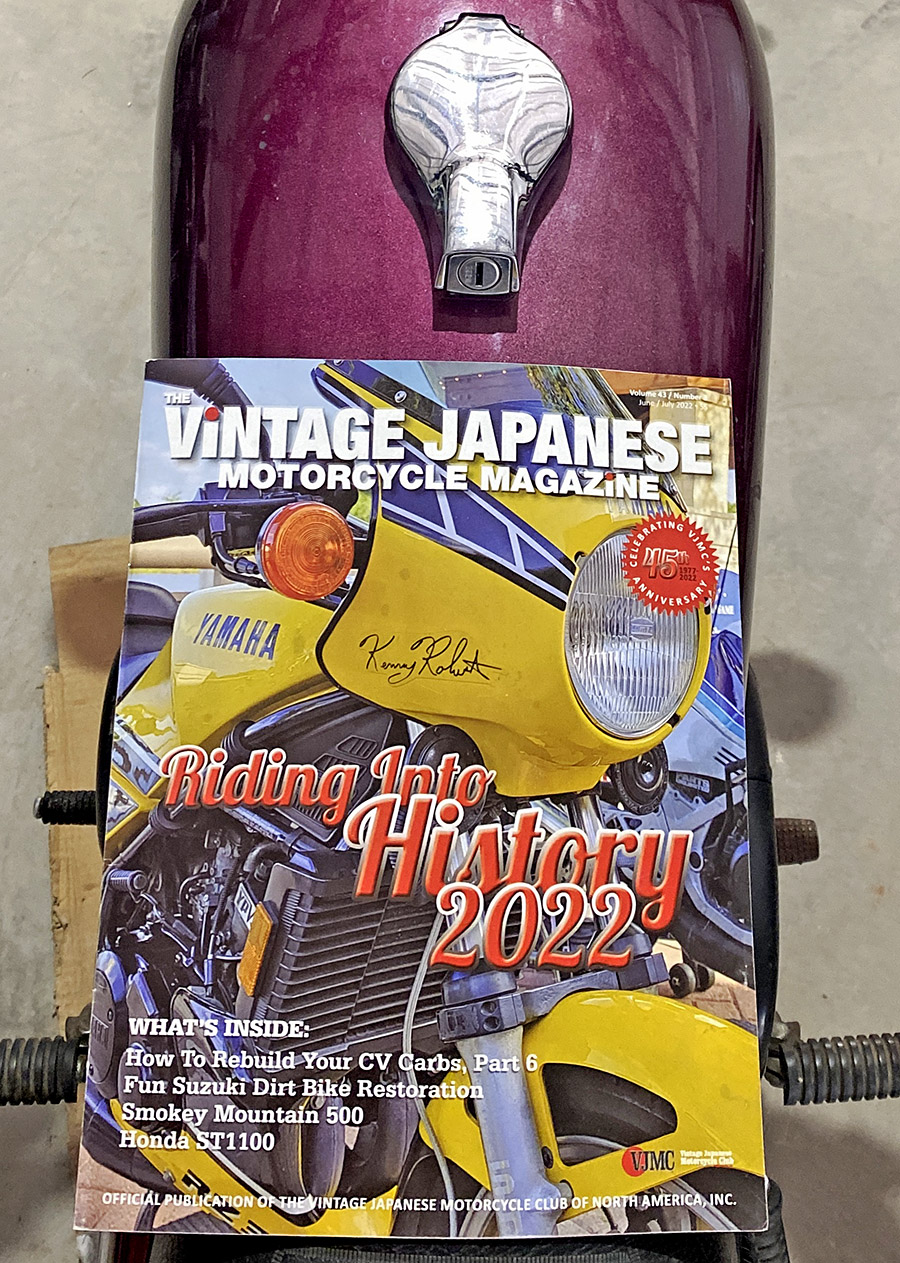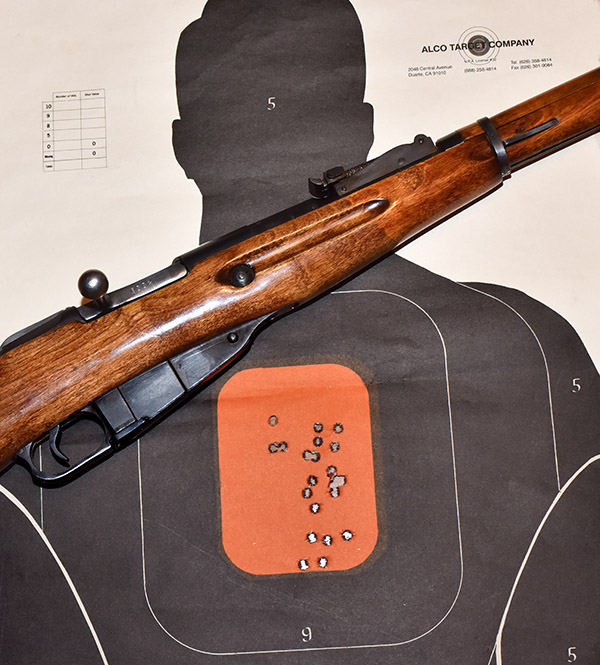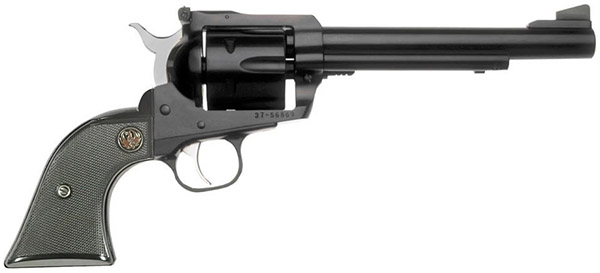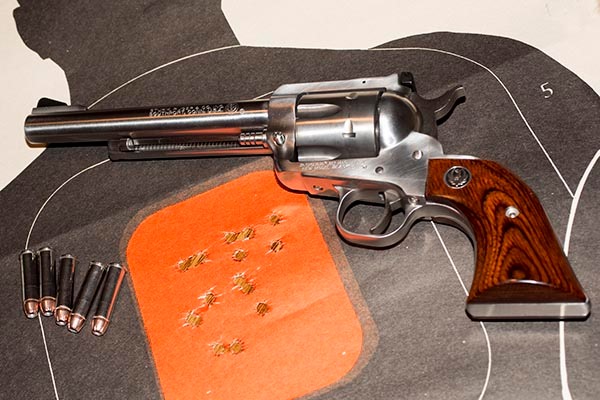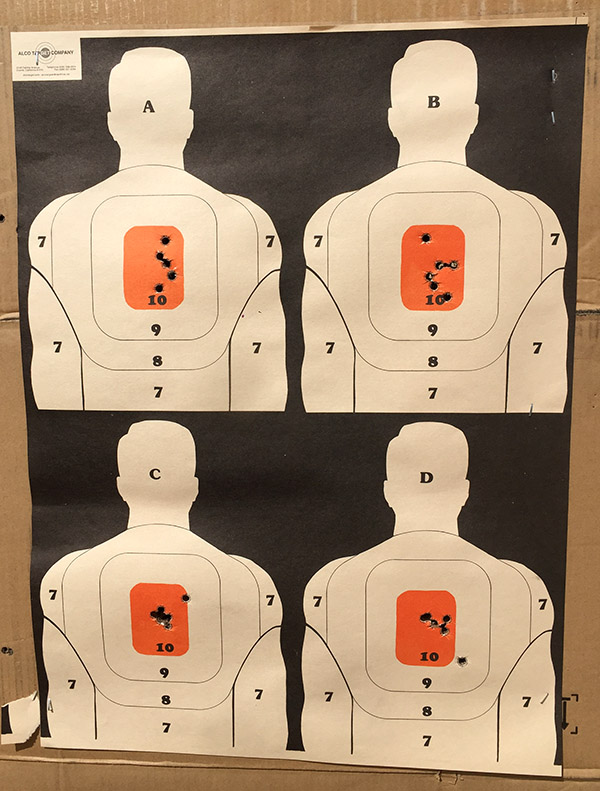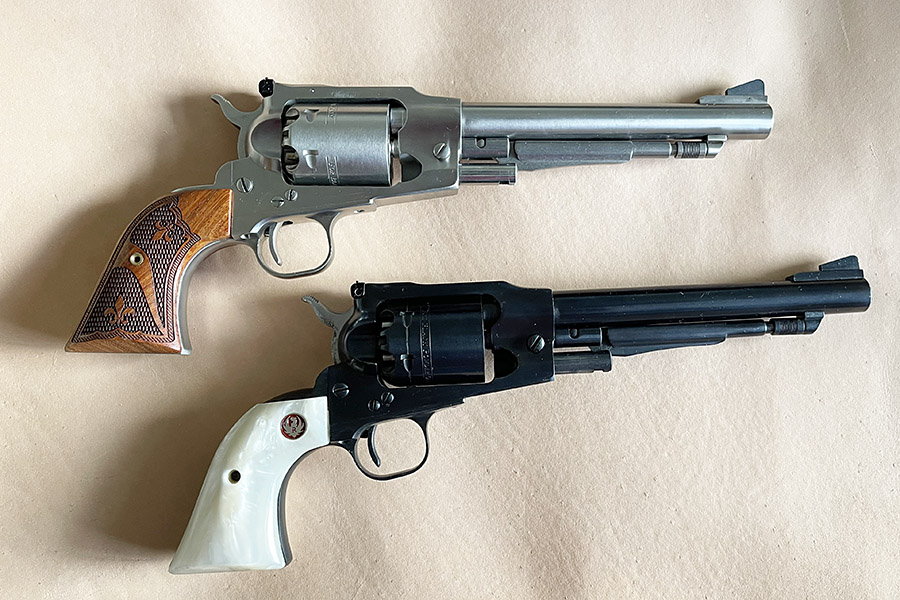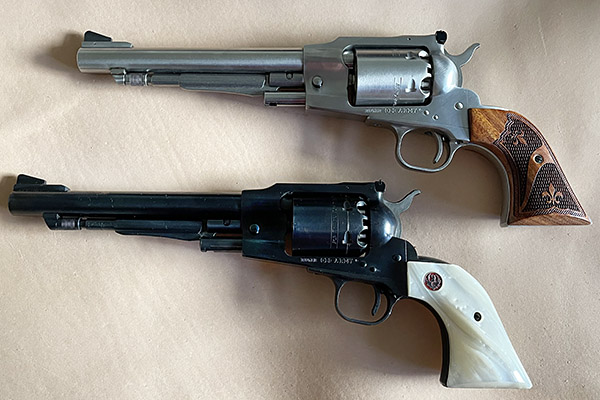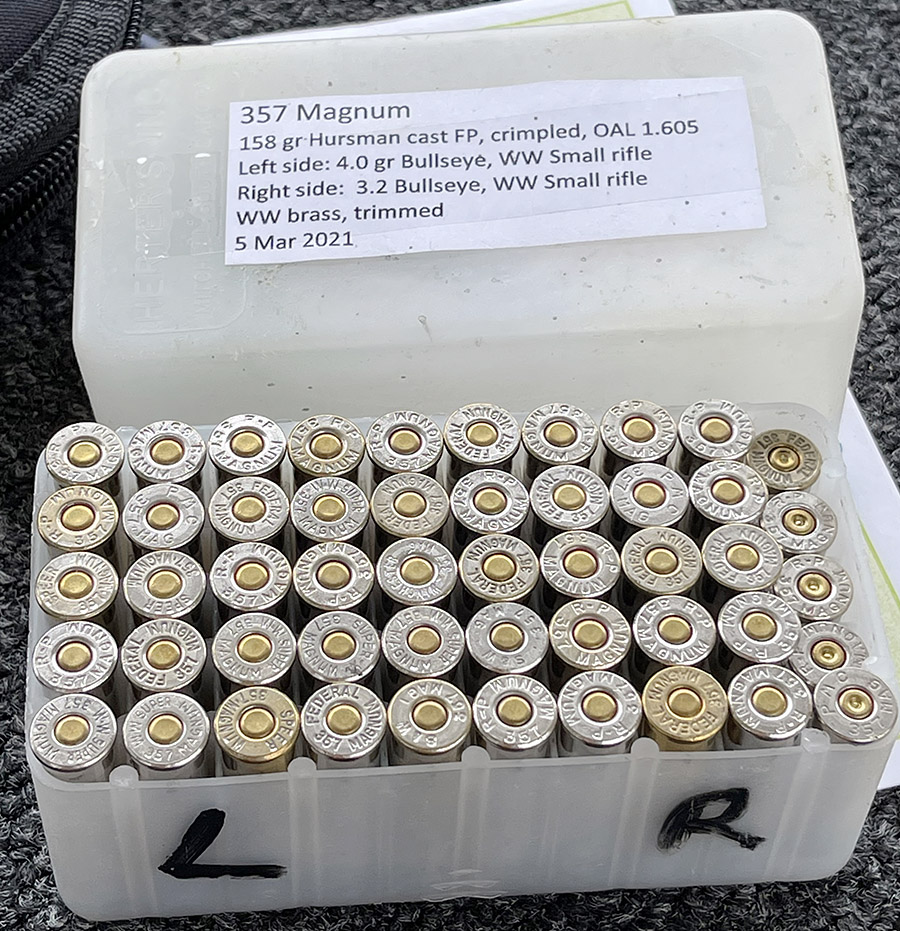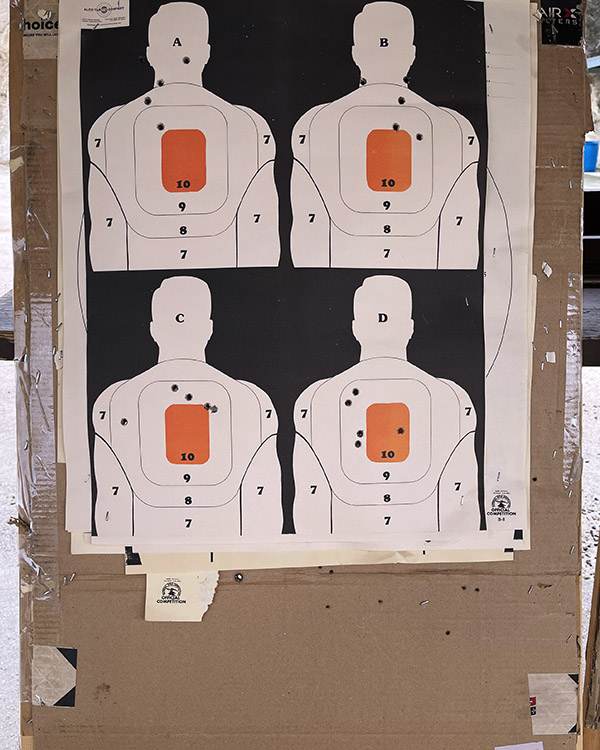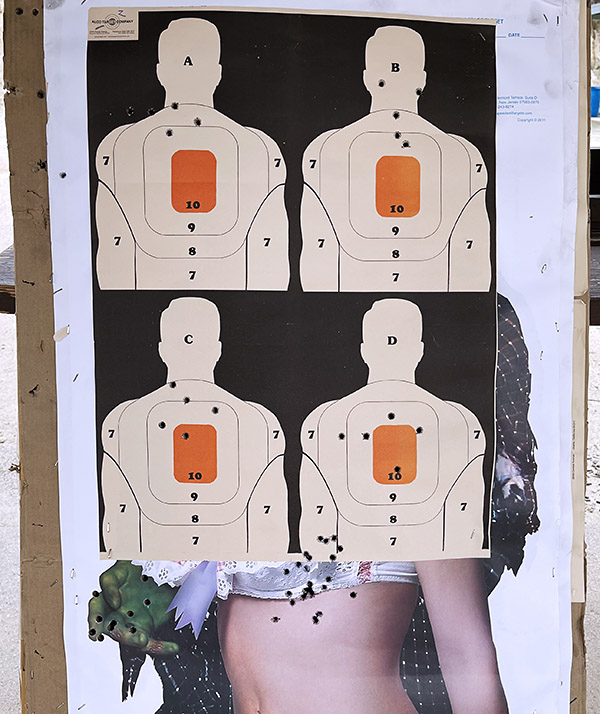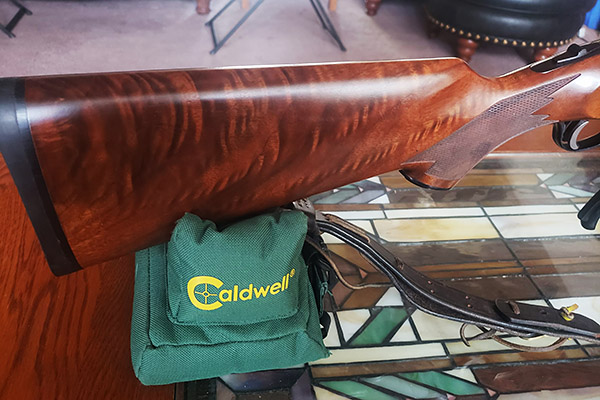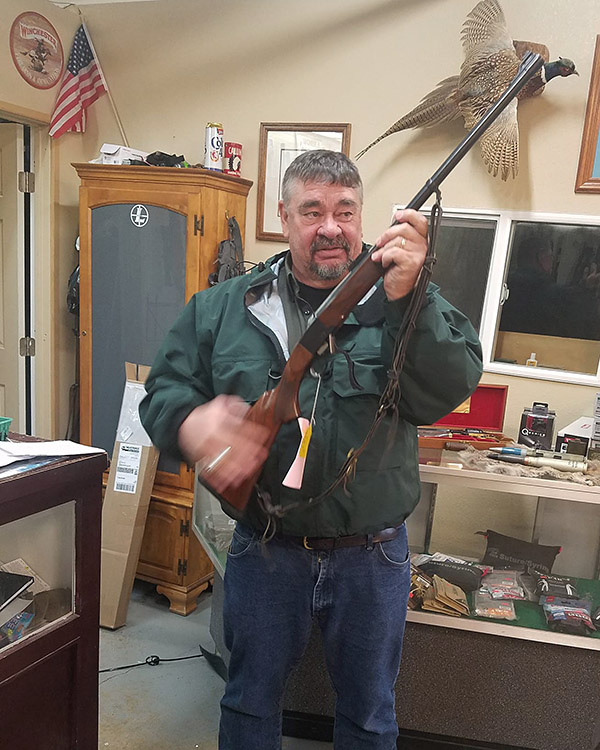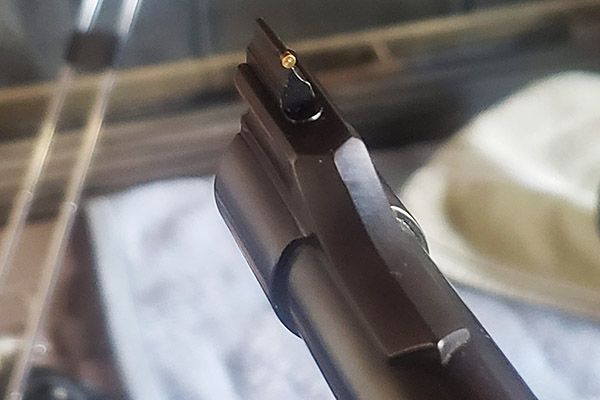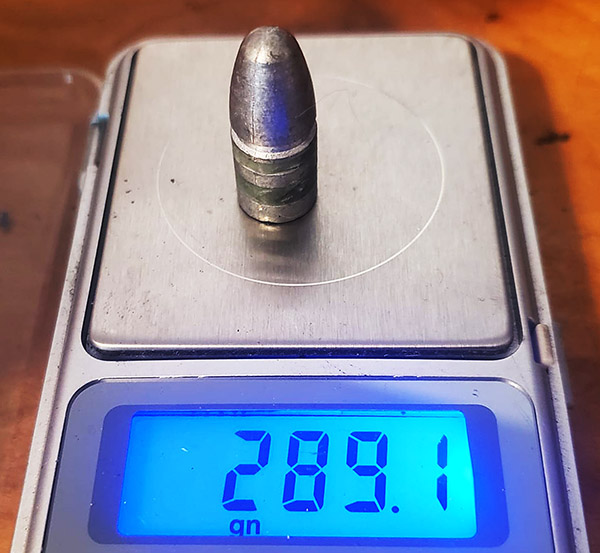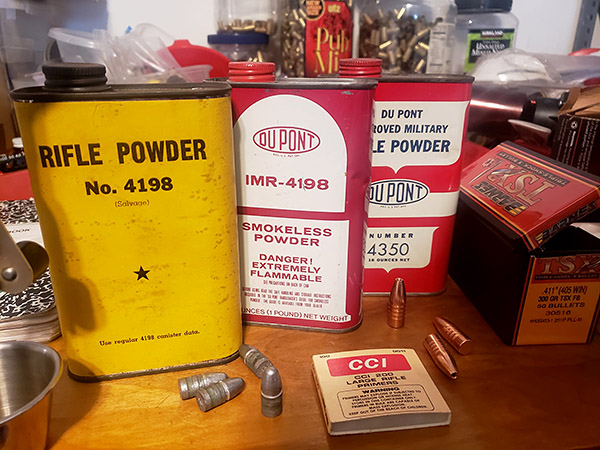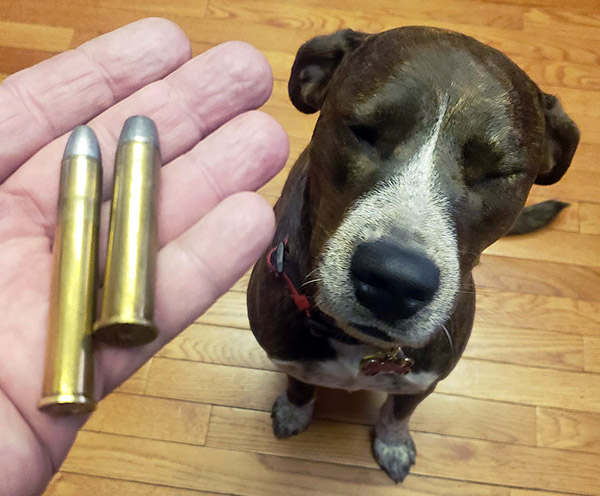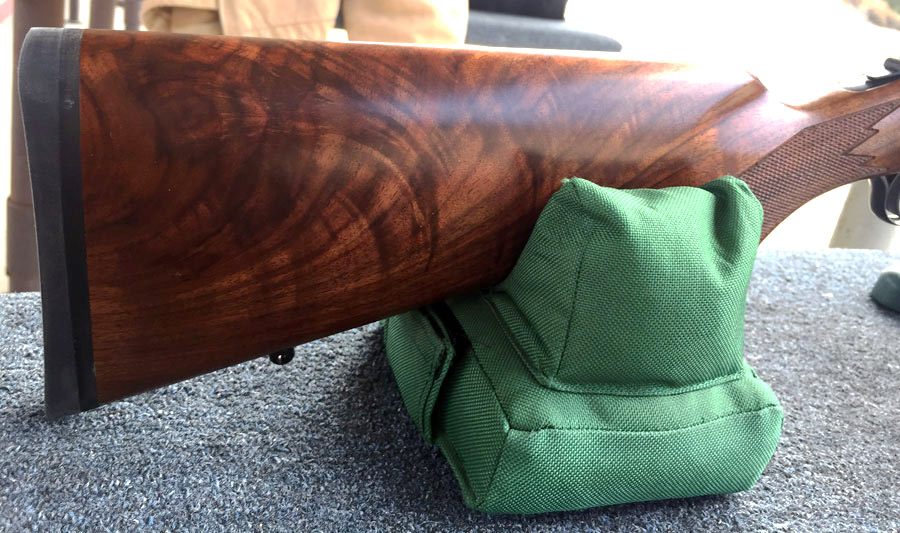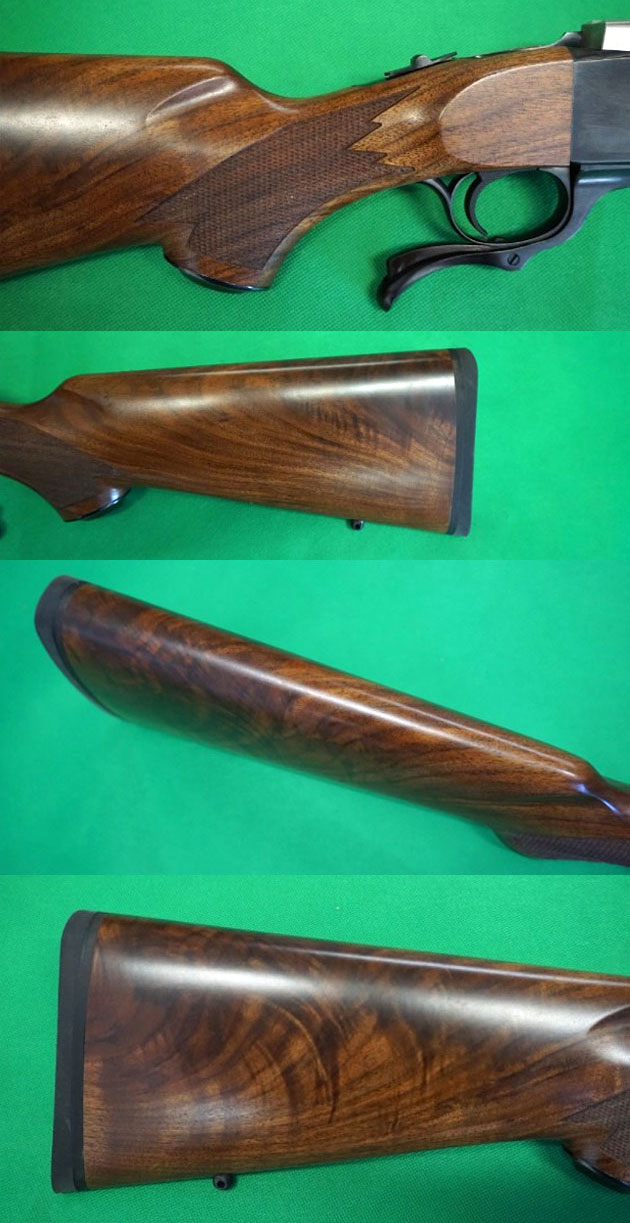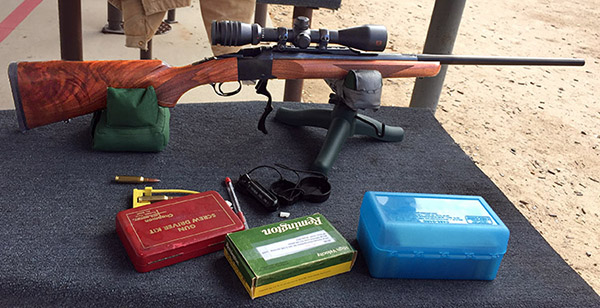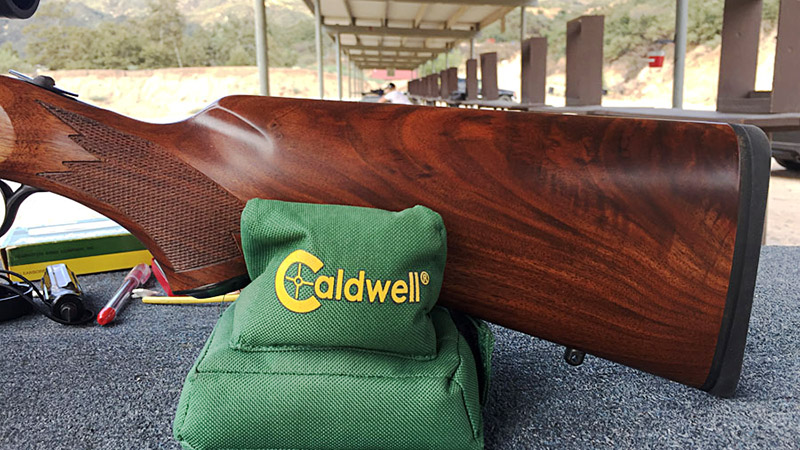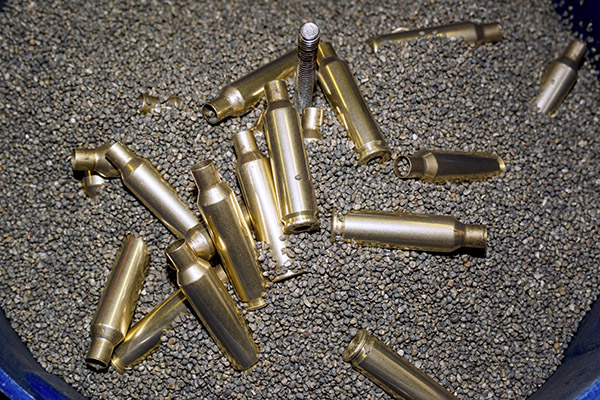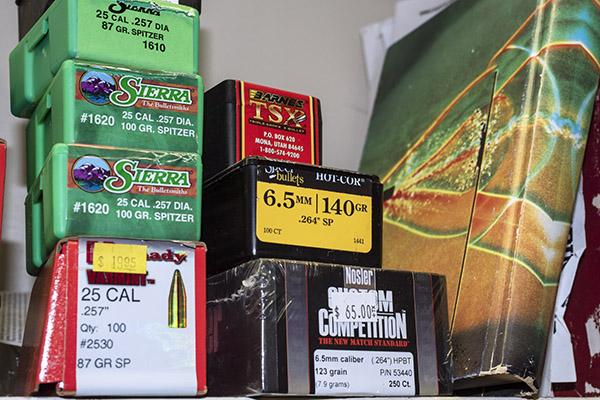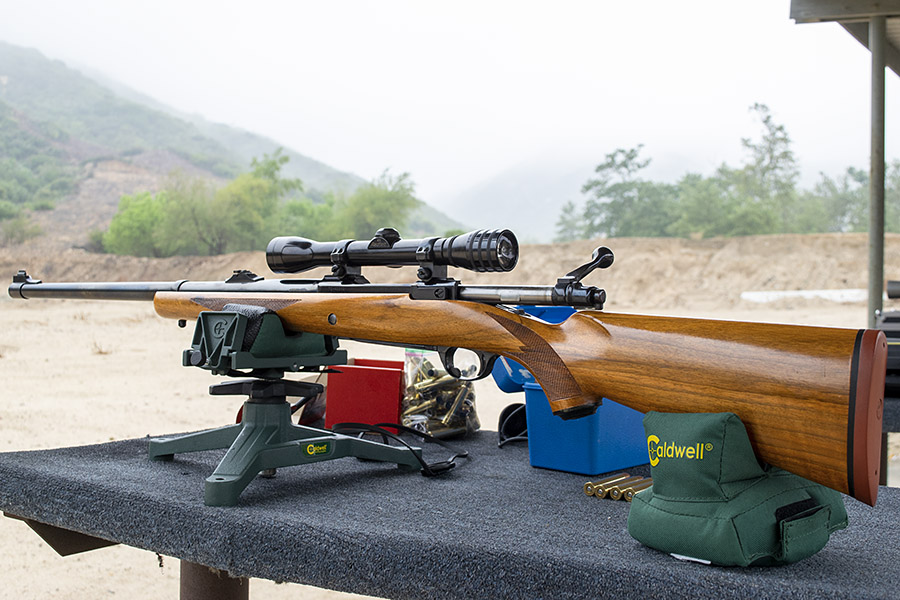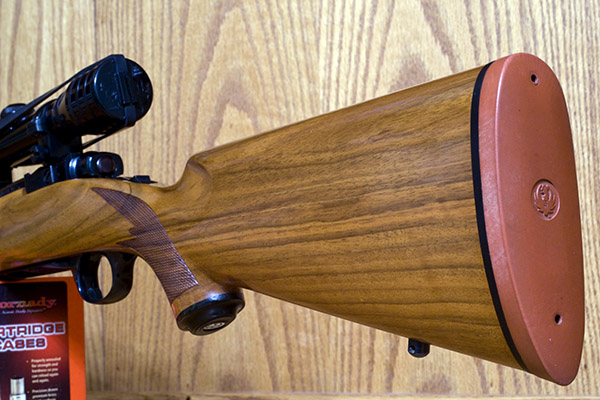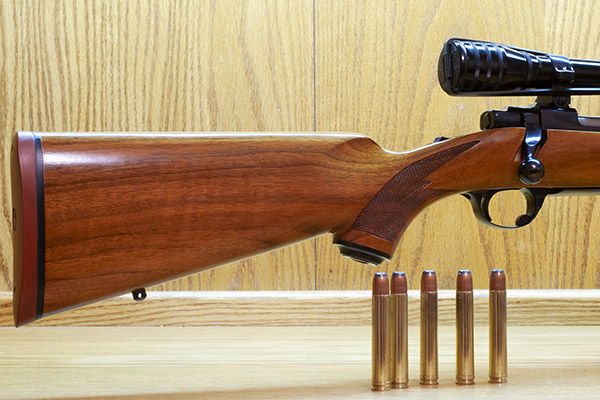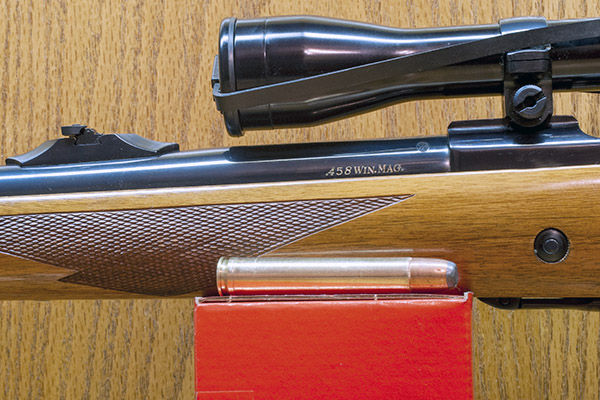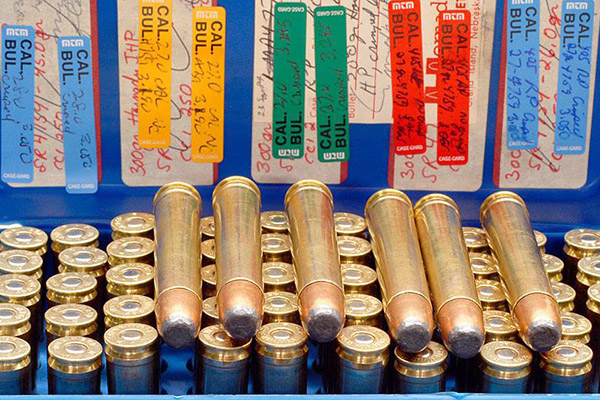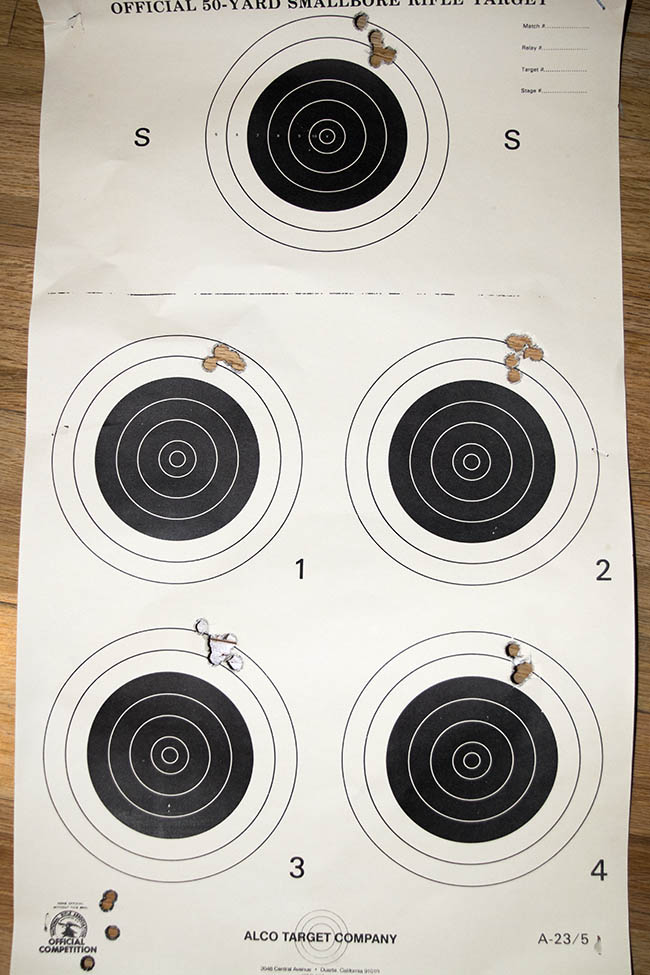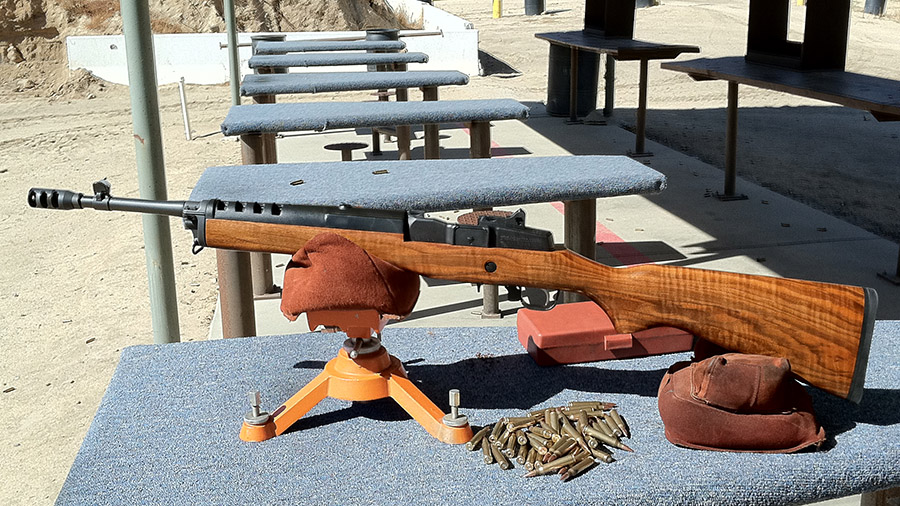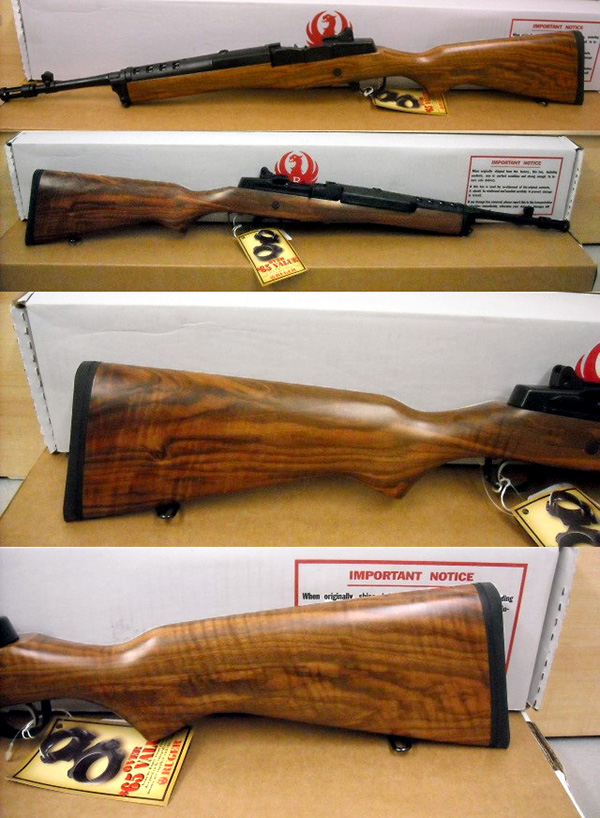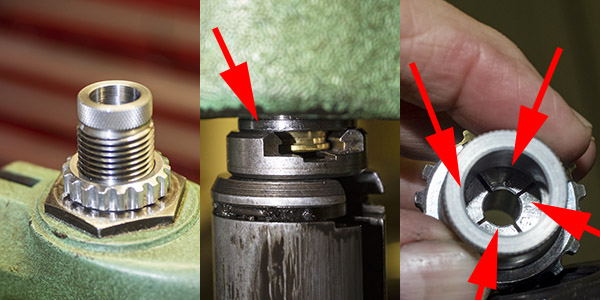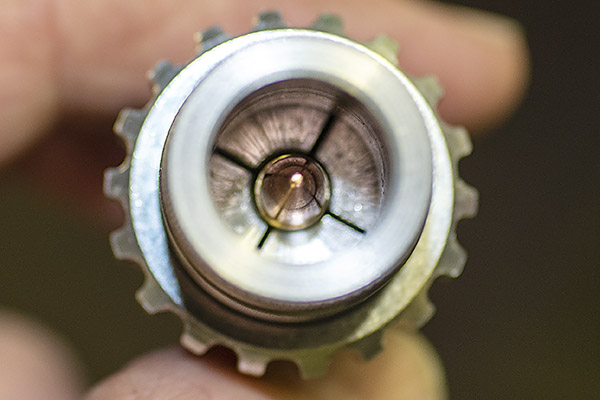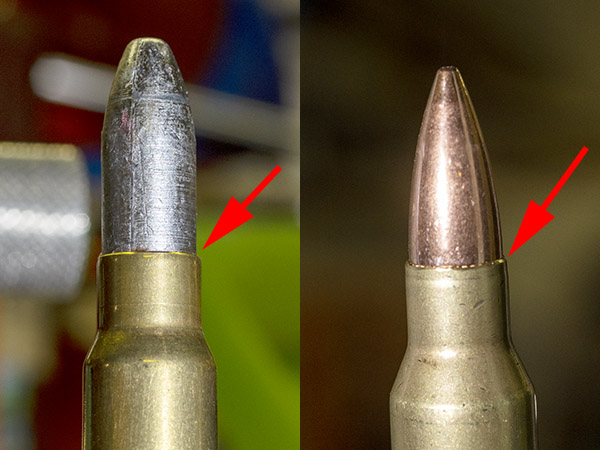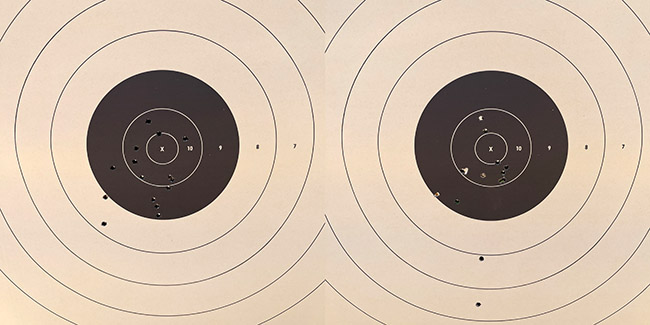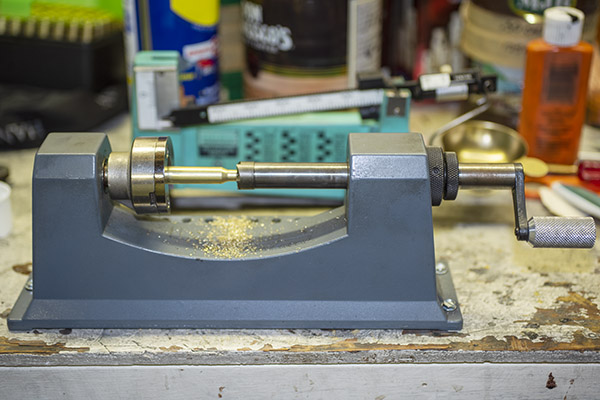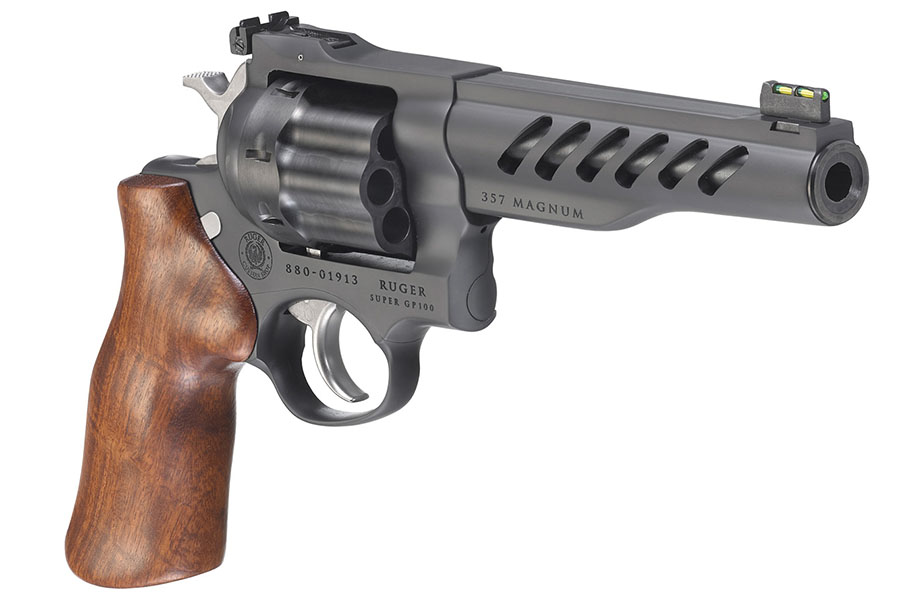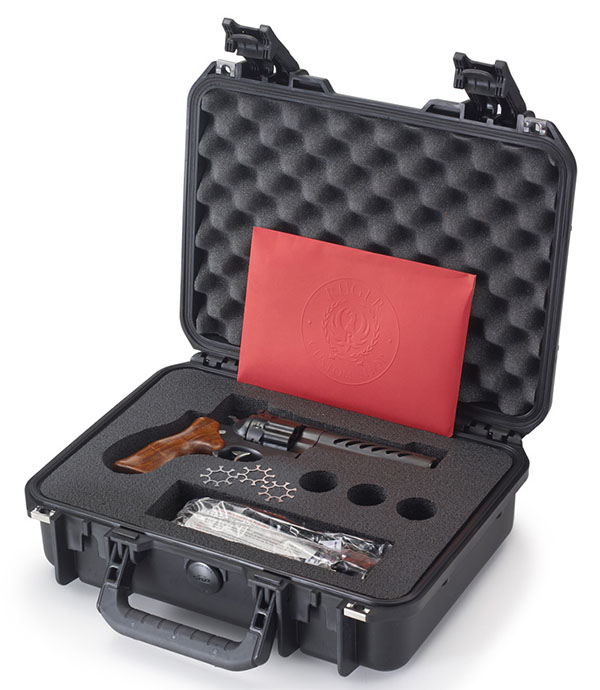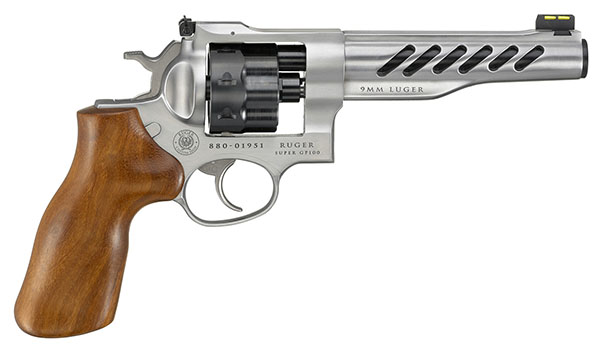I recently bid in a Rock Island auction for an Old Model Blackhawk once owned by Hank Williams, Jr. I wanted that gun, but not as badly as someone else. It sold for $4,993.37. I thought that was crazy, but in these days of 8.3% inflation (considered by some to be nothing), I’m not sure what constitutes crazy anymore.
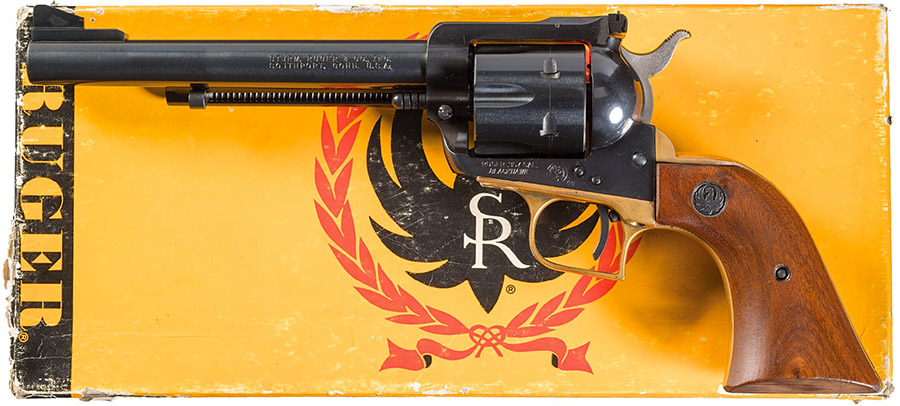
As an aside, the New Model Blackhawk is not that new. Ruger introduced it in 1973. The New Model contains internal changes (a transfer bar mechanism) that prevents it from firing if it is dropped with a live round in the chamber. The previous Blackhawk (sometimes called the Old Model or the Three Screw) could discharge a round if it was dropped. The Hank Williams Ruger you see above is the Old Model.
You know the story of my stainless steel .357 Magnum Blackhawk (it went down the road), and that left me without one. I felt naked without a .357 Magnum Blackhawk, so I bought a new one through Gunbroker.com from Reeds in Minnesota. I recently picked it up (after waiting the obligatory Peoples Republik of Kalifornia 10-day cooling off period). I’ve already started a couple of blogs on the new Blackhawk, including one on the best accuracy loads and another comparing it to the Colt Python (a .357 Magnum revolver costing twice as much as the Blackhawk). This blog focuses on my initial impressions.
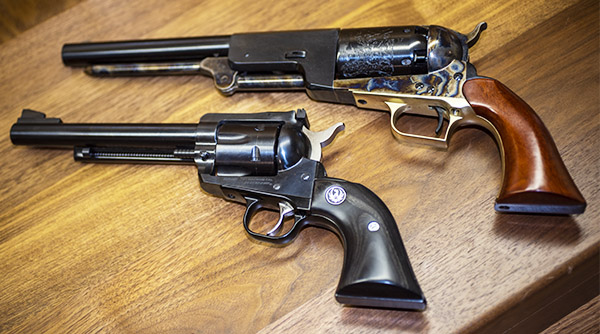
My first impression is one I’ve always had: Ruger’s New Model Blackhawk is a massive handgun. I ordered mine with the 6 1/2-inch barrel (it’s primarily going to be a target gun, although if all the planets come into alignment I may hunt with it someday). My first thought when I picked it up was of the Colt Walker, another sixgun of huge proportions. The Ruger is a bit smaller than the Walker, but you have to put them side by side to see it. Heft the Ruger by itself and the feel is one of massiveness. It’s a big revolver. I like that.
The bluing is what I’d call an industrial grade gun finish. It’s certainly better looking to me than the black plastic stuff I see on the range. My cylinder had bright spots where the bluing was incomplete.
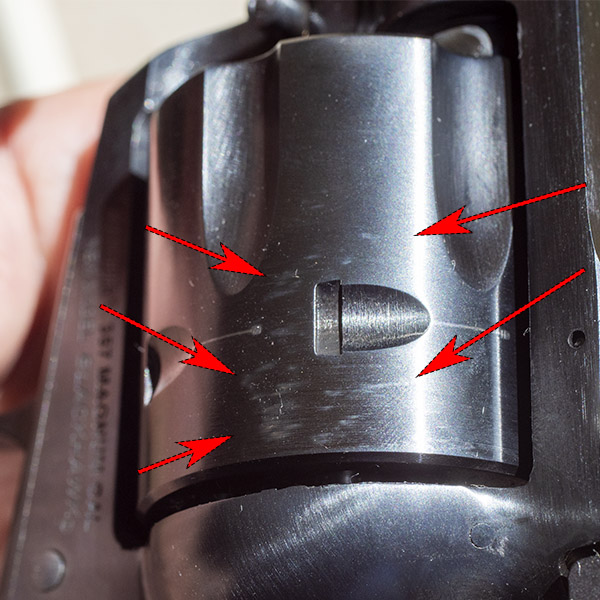
The pin securing the rear site to the revolver is another issue. After my first 140-round range session, it started to back out. Green Loctite is the answer here. In fairness to Ruger, I’ve experienced this on other handguns. But it shouldn’t happen.
The fit of the black plastic grips can only be described as poor. I had decided (before I saw the revolver) that I would leave the stock checkered black plastic grips on the gun because I have the same grips on a .30 Carbine Blackhawk and I like the fit, the feel, and the look. On the .30 Carbine Blackhawk, the grips fit well. On this new .357 Blackhawk, the grips didn’t match the grip frame.
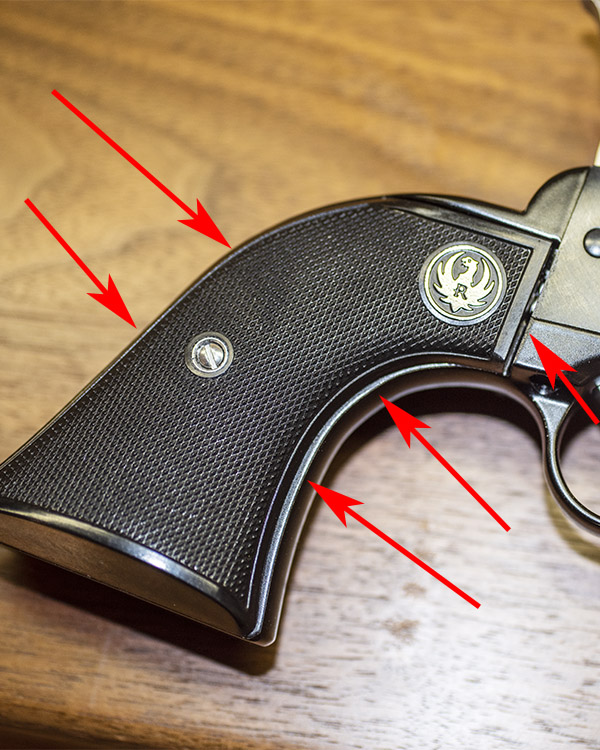
The grip frame sits a good 0.080-inch proud of the grips nearly all the way around. I’ve seen this sort of thing on other Blackhawks. I don ‘t know if the grip frames are varying from gun to gun, or if the grips are varying, or if both conditions exist. In any event, the lack of dimensional control is not good. If I had seen this gun in a gunstore, I would have asked to see another.
I have a few older Blackhawk grips I’ve picked up over the years. One is a set of black laminated grips. They fit the new .357 much better. The fit is not perfect, but it’s better and they’re staying on for now. The dark grips complement the Blackhawk’s look well. It’s what you see in the big photo at the top of this blog.
I checked the Ruger’s timing and it is perfect (as it should be). The way to check timing is to exert light drag on the cylinder while cocking the hammer, and the cylinder bolt should click in place when the hammer reaches full cock. Kudos to Ruger on that. You’d be surprised how many new guns are timed incorrectly from the factory. In the late 1970s in the Dirty Harry craze, Smith and Wesson revolvers were notorious for being out of time when brand new (I know because I bought a few; they quickly went to new owners).
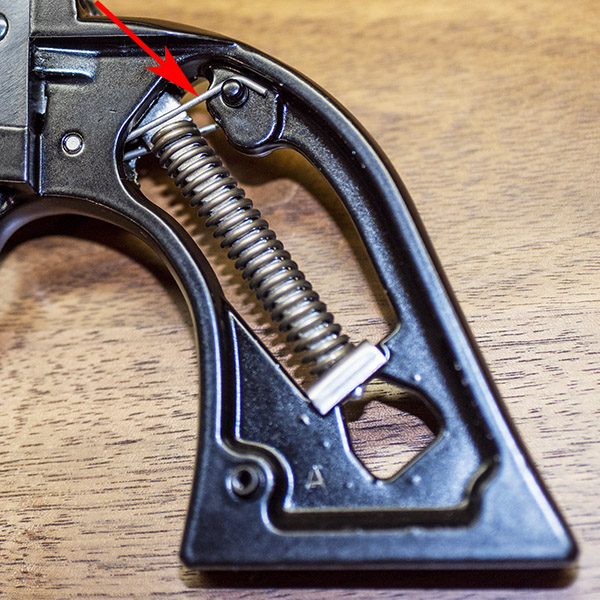
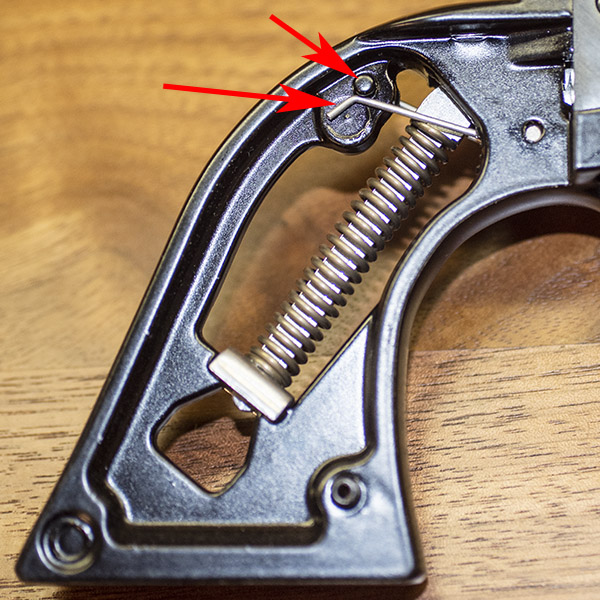
The Ruger’s trigger is crisp, with zero creep. Ruger got that right, too. I did a quick New York trigger job, and it now it is lighter and has that classic “breaking glass” release. It’s a wonderful trigger.
So how does it shoot? In a word, it’s wonderful. I’ve already been to the range to evaluate different loads (the subject of a future blog), and the results are impressive. Here’s a set of teaser photos showing a few 50-foot, 5-shot groups.
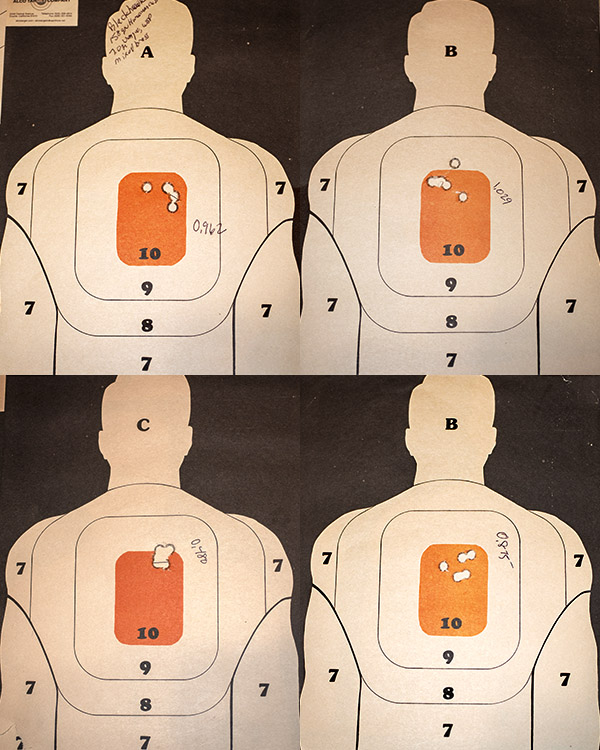
We’ll have a series of blogs on the Blackhawk in the coming days. One will be the preferred loads blog mentioned above. Another will be a detailed comparison of the Blackhawk and the Colt Python. Apples and oranges, you say? Maybe not.

I contacted Ruger about the grips and the cylinder bluing; they are sending me a new set of grips and they will reblue the cylinder. That’s Ruger Customer Service; it’s the best in the business.
On the off chance that decisionmakers at Ruger read this blog, indulge me and allow a recommendation from one of your biggest fans. Bring out a premium version of the .357 Blackhawk with:
-
-
- A brass grip, Super Blackhawk Dragoon frame (like that Hank Williams, Jr. revolver shown above). Yeah, I know it would cost more. There are people willing to pay more. Put me at the head of that line.
- A high polish blue, like you used to do on the Super Blackhawk. The same comments apply; a price hike would be okay.
- A 7 1/2-inch barrel. You already do so on the Super Blackhawk, and on the .30 Carbine and .45 Colt Blackhawks. That extra inch of sight radius makes a difference, and a 7 1/2-inch barrel just looks cool. Regarding cost, see above.
-
That’s it for now. Stay tuned; there’s more good stuff coming your way.
Never miss an ExNotes blog:
More Tales of the Gun!

